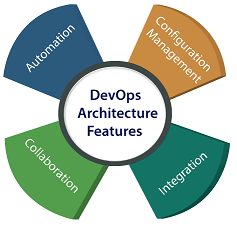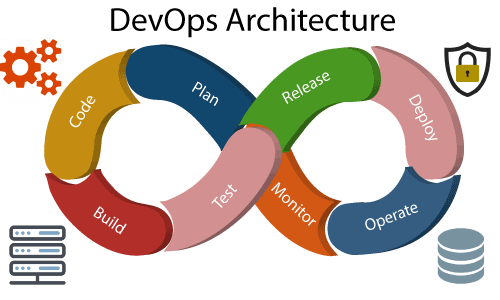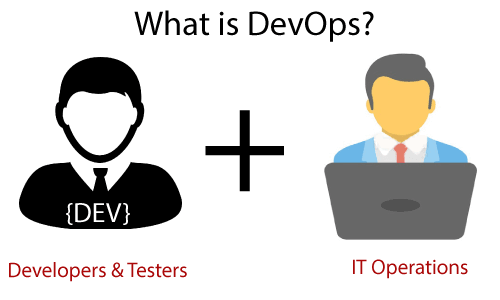What is DevOps?
DevOps is the combination of two words, one is Development and other is operation. This allows a single person to handle the entire lifecycle of an application. DevOps helps in collaboration between Development and Operations team to deploy code to production faster. it helps to organization speed to deliver application and services. It is a sequence of development and it operation with better communication and collaboration.
Features of DevOps architecture:

- Automation
Automation reduces time consumption during testing and development phase. The productivity increases by automation. This will help in catching bugs so that it can be fixed easily.
2. Collaboration
The Development and Operations team collaborates as a DevOps team, which improves the cultural model as the teams become more productive with their productivity, which strengthens accountability and ownership. The teams share their responsibilities and work closely in sync, which in turn makes the deployment to production faster.
3. Integration
The Applications need to integrate with other components in the environment. In integration phase the existing code is combined with new code and tested. The continious integration and testing enables continious development.continious integration helps in to execute delivery in a quicker, safer and reliable manner.
4. Configuration management
It helps the application to interact with only those resources which are concerned with the environment.
Advantages of DevOps:-
- It is a collective responsibility which help in better team engagement and productivity.
- It improves customer satisfaction and experience.
- It is an excellent approach of development and deployment.
- DevOps respond faster to the market changes and improve bussiness and growth.
- it places all the tools in the cloud for customer easy access.
Disadvantages of DevOps:-
- Less availablity of DevOps professionals.
- DevOps is expensive.
- DevOps technology is hard to manage.
DevOps Architecture:-

1. Build
Without DevOps the cost of the consumption of the resource was evaluated based on the pre defined individualsusage with fixed hardware allocation. But DevOps usages the cloud for resource sharing, it is a mechanism to control usage of resources.
2. Code
Many good practices like Git helps in writing the code for bussiness, track changes, getting notified about the freason behind the changes and if necessary reverting to the original code developed.
3.Test
The application will be ready for production after testing. In the case of manual testing, it consumes more time in testing and moving the code to the output. The testing can be automated, which decreases the time for testing so that the time to deploy the code to production can be reduced as automating the running of the scripts will remove many manual steps.
4. Plan
Devops use Agile methodology to plan the development.
5. Monitor
Monitering is used to identify any risk of falilure. It also help in tracking the system accurately so that the health of the application can be monitered easily.
6. Deploy
Many systems can support the scheduler for automated deployment. The cloud management platform enables users to capture accurate insights and view the optimization scenario, analytics on trends by the deployment of dashboards.
7. Operate
The teams operate in a collaboration where both the teams actively participate throughout the services lifecycle.
8. Relaese
Deployment to an environment can be done by automation. But when the deployment is made to the production environment, it is done by manual triggering. many processes involved in release management commonly used to do the deployment in the production environment manually to lessen the impact on the customers.
- CSS border-spacing property - July 26, 2021
- CSS border- collapse property - July 26, 2021
- CSS tutorial (CSS Border-radius) - July 22, 2021
